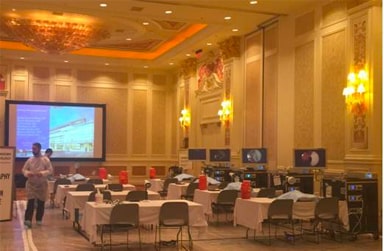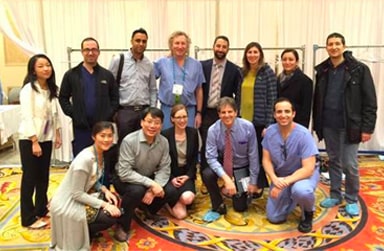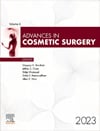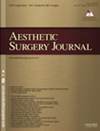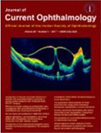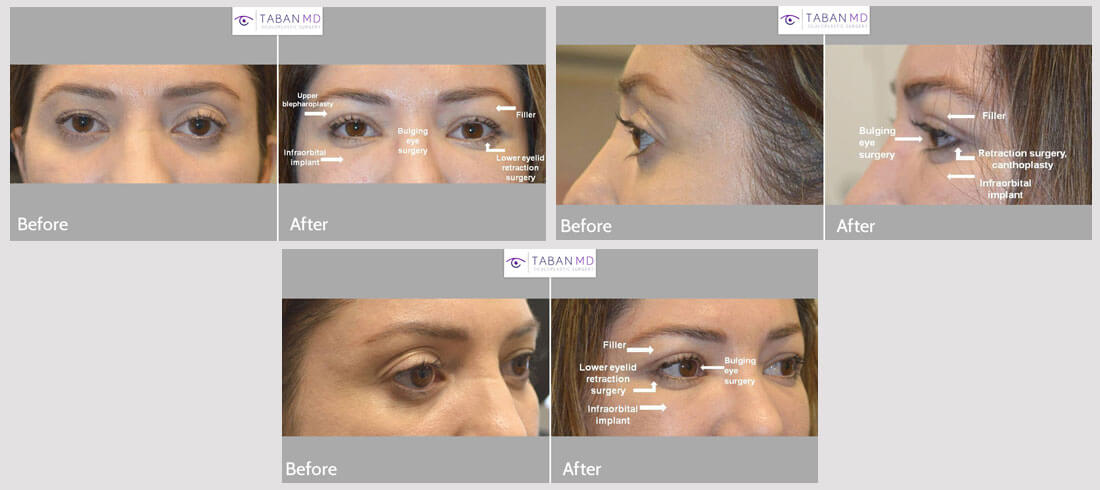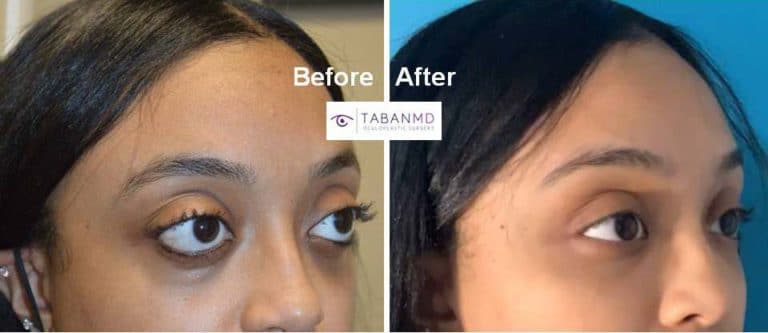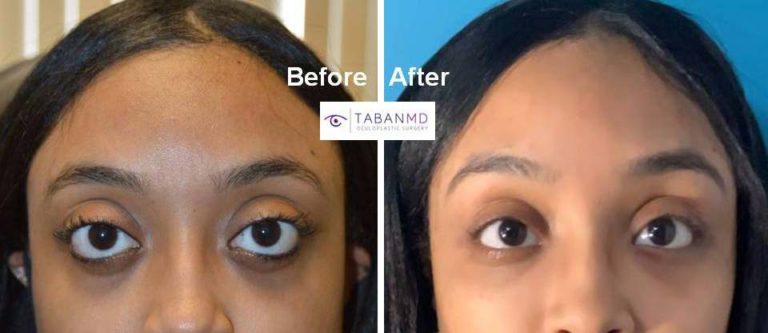Orbital Decompression Surgery
Bulging eyes (aka proptosis or exophthalmos or negative orbital vector) is when the eyes can appear larger and, at times, disproportionate to the rest of the face. Often, bulgy eyes can be painful, exposing the eyes to too much air and foreign objects. Bulging eyes may be present from birth and are more prevalent among certain ethnicities. While the same bulging eyes may be abnormal in one ethnicity/race, they may be normal in another. Bulgy eyes can be symmetric or asymmetric with only one side involved or one eye worse than the other side.
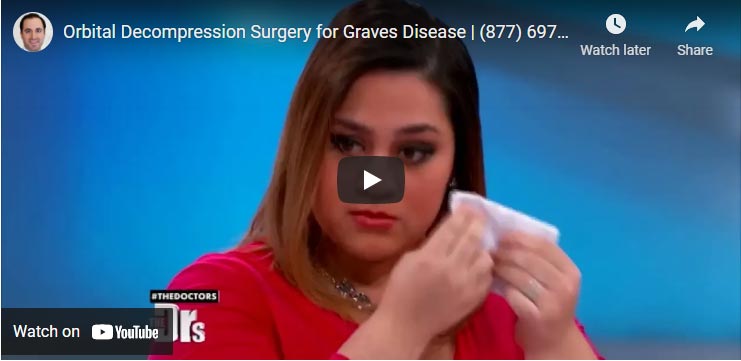
Proptosis (bulging eyes) or appearance of bulgy eyes can result from a variety of causes, including:
- Graves’ or thyroid eye disease
- Orbital tumors
- Genetics (Inherited)
- Shallow orbit (shallow eyes socket)
- Sunken cheek bones
- Large Myopic Eyeballs
- Relatively large eye when compared to sunken opposite eye
Treatment For Bulging Eyes
The treatment for proptosis or bulging eyes is orbital decompression surgery. The procedure can be performed for functional or rehabilitative reasons, as bulging eyes can cause eye irritation, redness, and tearing from increased exposure of the eyeballs to air and/or an inability to close the eyes fully. Orbital eye socket surgery sets the eyeballs back by removing bone and/or fat from behind the eyeballs through small, hidden or inconspicuous incisions. The procedure is done on an outpatient basis.
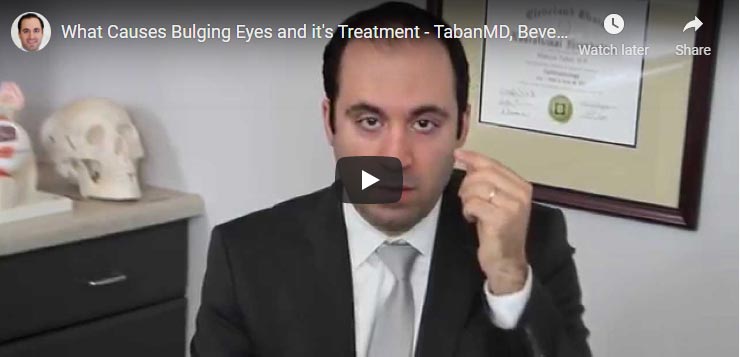
Orbital Decompression Surgery
Surgery for protruding (bulging or negative orbital vector) eyes can also be performed for cosmetic or aesthetic purposes for those who are unhappy about the appearance of their eyes or the way they look in proportion to the rest of the face, either due to disease or inherited. Usually, the degree of orbital surgery needed for aesthetic reasons is less than that required for functional reasons and hence it is even safer. As stated earlier, cosmetic orbital decompression surgery for bulgy eyes is performed on an outpatient basis, where the patient goes home after surgery.
Read Dr. Taban’s Manuscript about Modified (Scarless) Orbital Decompression Technique.


Read Dr. Taban’s Manuscript about Expanding Role of Orbital Decompression in Aesthetic Surgery.


Read Dr. Taban's Manuscript about Combined Orbital Decompression and Eyelid Retraction Surgery.
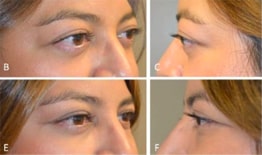
Dr. Taban uses only the latest surgical technologies, including minimal (hidden) incision techniques, to provide quicker recovery times and natural outcomes for his patients. During your consultation with Dr. Taban in Los Angeles (Beverly Hills or Santa Barbara), he will evaluate your eyes and face and discuss customized eye socket surgery that will work best for you, given your specific anatomy/problem and desired goal. If the two eyes look different, then a different amount of eye socket surgery can be done on each eye. An orbital imaging may be obtained in some cases prior to surgery.
IMPORTANT NOTE: Relatively hollow area around the eyes can also make the eyeballs appear bulgier. Therefore, a substitute procedure or additional complimentary procedure is filling around the eye with either fat or filler. Filler injection to improve sunken appearance around the eye is a nonsurgical option for the right candidate.
Who Is A Candidate For This Procedure?
- Inherited proptosis (bulging eye) such as shallow eye socket, sunken cheekbone, etc.
- Acquired proptosis (bulging eye) such as thyroid eye disease.
- Apparent proptosis from relatively sunken opposite eye.
- Apparent proptosis from large myopic eyeball.
- Hyperglobus (higher eyeball position compared to opposite eye).
Intended Results & Benefits
- More natural appearing eye(s), in proportion to the face.
- Better symmetric eyes (if asymmetry present prior).
- Improved or normal eye closure (if problem present prior).
Procedure Overview
- Orbital decompression surgery is done on an outpatient basis under general anesthesia. It takes anywhere from 45 minutes to 90 minutes to complete the procedure on each side, depending on the anatomy and how much decompression is needed.
- The incision is hidden in the upper eyelid crease and/or inside the eyelid and/or caruncle.
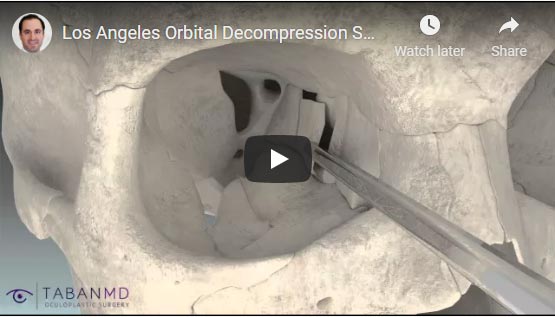
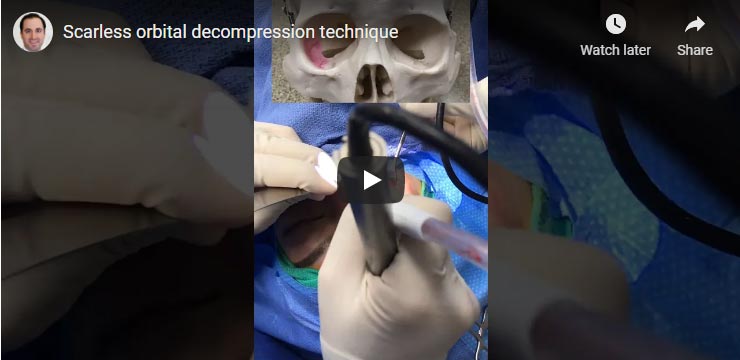
Surgical video demonstrating scarless orbital decompression.
Recovery Post-Orbital Decompression Surgery
- Bruising and swelling usually subside within 10-14 days.
- Minimal to moderate pain for the first day, controlled by oral pain medication.
- Vision is intact since no patches are used.
- Nonabsorbable sutures are removed 1 week after surgery while absorbable sutures are left alone.
- The patient can resume normal activity after about 7-10 days.
- Eye makeup may be used following healing of the incision.
- Contact lenses can be worn when comfortable (usually after 7-10 days).
Dr. Taban is an experienced orbital decompression surgeon. He has an oculoplastic surgeon with specialized training in eyelid, orbit, and lacrimal surgery. He has offices in the greater Los Angeles area (Beverly Hills and Santa Barbara). Contact us today.
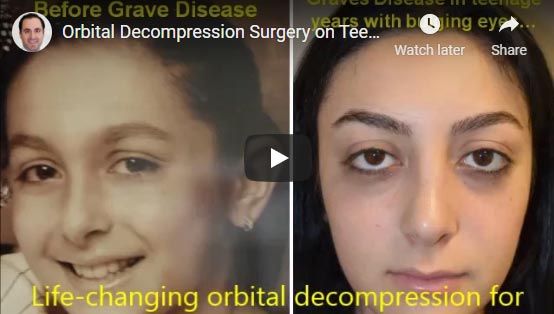
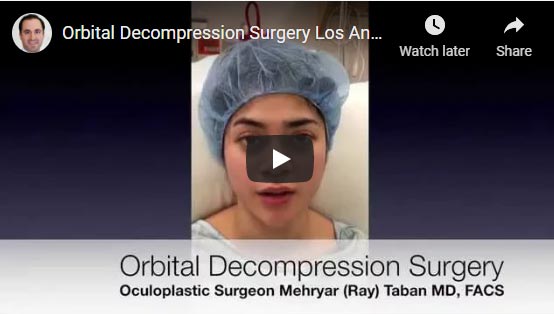
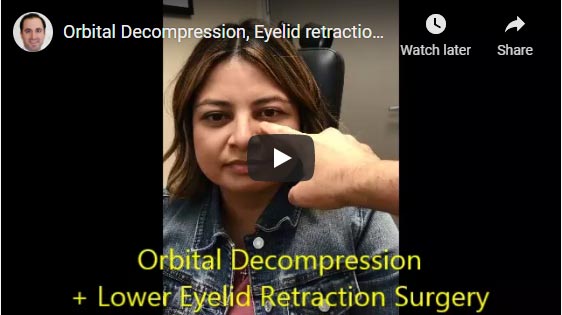
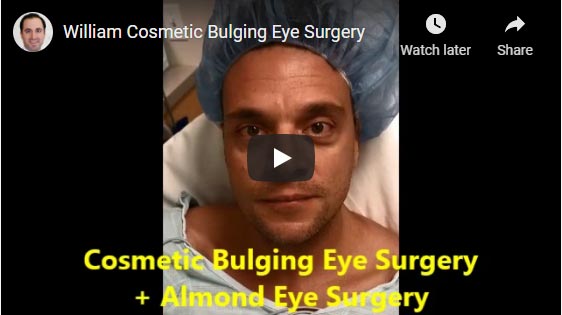
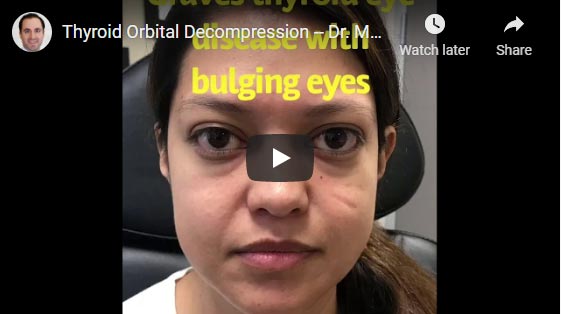
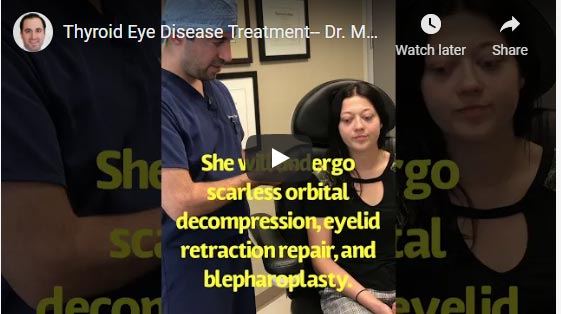
Young beautiful woman with severe Grave thyroid eye disease traveled from Slovakia to Los Angeles and underwent life-changing treatment including scarless orbital decompression surgery, lower eyelid retraction surgery, and upper blepharoplasty, to restore more natural eye shape and function. Before and 3 months after surgery results are shown.
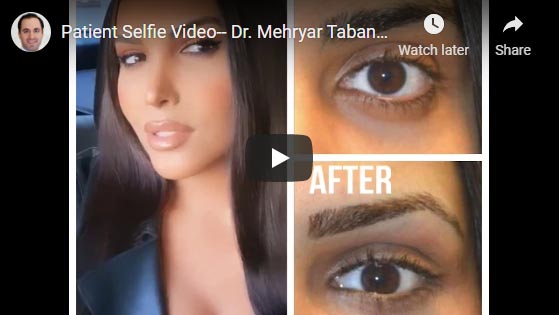
Video selfie of a happy transgender woman who underwent almond eye surgery with lower eyelid retraction surgery and canthoplasty, customized infraorbital rim silicone implant, customized orbital decompression, and upper eyelid filler.
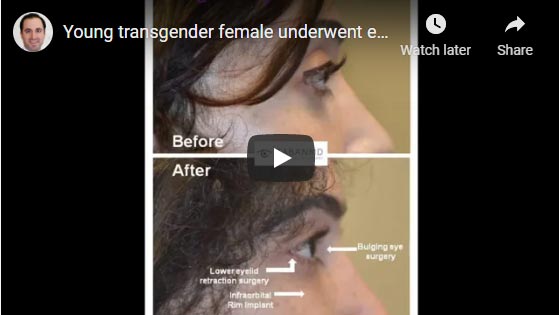
Young transgender female underwent eye reshaping surgery to have less bulging and more uptured almond eyes. Procedure included scarless orbital decompression, lower eyelid retraction surgery with canthoplasty (almond eye surgery), and customized infraorbital rim silicone implant.
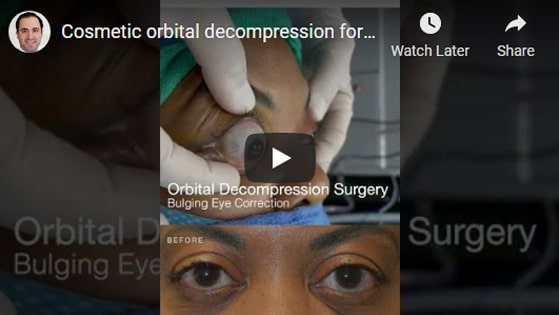
Before & After Photos
Young Asian female, with genetic bulging eyes, underwent scarless orbital decompression, with quick recovery. She traveled from Asia to Los Angeles for her surgery.
27 year old transgender female, underwent eye transformation almond eye surgery including lower eyelid retraction surgery with canthoplasty, infraorbital rim silicone implant, orbital decompression bulging eye surgery, and upper eyelid filler injection. Before and 1 month after surgery photos are shown.
Woman who was unhappy about her eye shape and eye asymmetry, underwent eye plastic surgery including cosmetic bulging eye orbital decompression, infraorbital rim silicone implant, lower eyelid retraction surgery with canthoplasty, right upper blepharoplasty and left upper eyelid filler injection. Note more almond shaped and symmetric eye appearance in the after photo taken 1 month after almond eye surgery.
Young woman underwent life changing eye plastic surgery (cosmetic orbital decompression, lower eyelid retraction surgery with canthoplasty, infraorbital rim implant, and upper eyelid filler injection) to improve her eye appearance.
Young beautiful woman with severe Grave thyroid eye disease traveled from Slovakia to Los Angeles and underwent life-changing treatment including scarless orbital decompression surgery, lower eyelid retraction surgery, and upper blepharoplasty, to restore more natural eye shape and function. Before and 3 months after surgery results are shown.
34 year old female, with bulging eyes from Graves disease, underwent combined orbital decompression surgery plus lower eyelid retraction surgery plus orbital rim (tear trough) implant placement. Before and 6 weeks after surgery results are shown. You can see her video testimonial on our website testimonial page and her surgical video on specified procedures
18 year old female teenager, with rare childhood Graves disease resulting in bulging eyes and change in eye shape, underwent orbital decompression surgery and lower eyelid retraction surgery. Before and 2 months after surgery results are shown. You can find her video testimonial on our website testimonial page.
Words cannot explain how much my life has changed since the life changing procedure/surgery. I had orbital decompression, lower eyelid retraction, and orbital rim tear trough implants…I’ve spent a great deal of time doing extensive research into this surgical procedure…After the consultation with Dr. Taban, I finally felt I found someone who I trusted … He exceeded my expectations with the outcome of the procedure…We only get one pair of eyes and I trusted Dr. Taban with my procedure and the results have changed my life physically and emotionally. Thank you, Dr.Taban.
Dr. Taban performed bilateral orbital decompression for my TED in August, 2016. It’s been more than 6 months since the surgery and my eyes have completely recovered and the scars from incisions were barely visible. I can say with confidence that he is THE best and the go-to doctor for this type of surgery. I was an out of town patient (thousands of miles away) … Dr. Taban is extremely talented, yet so humble … I can’t express my thankfulness enough to Dr. Taban and his staff … He is a gifted doctor …
Dr. Taban is a miracle doctor. I am 18 years old and had Graves Disease since my early teens. I saw him on The Doctors Show … He made me feel so comfortable (at consultation) … It has been two months since my surgery and the results are better than I expected. … my results seem unreal because I still can’t believe how the results turned out. Dr. Taban is such a humble person … I never thought I could get my eyes back but because of him I did. Dr. Taban really changed my life and I’ll be grateful forever.
Dr. Taban has been an amazing and one of a kind doctor. I suffered from graves disease and did extensive research trying to find a good doctor for my orbital decompression surgery… Dr. Taban really cares for his patients, before the surgery he makes you feel at ease and calm reassuring you that you’re in great hands… I’ve never had a doctor who shows you how much they care for your well being than doctor Taban… As to my results, I could not be any happier. My eyes look great, I feel like a whole new person and so many people have complimented my awesome results. I cannot thank doctor Taban enough. He works miracles …
Dr. Taban & Orbital Decompression Surgery Changed My Life! – When I first noticed my eyes changing because of my Graves Eye Disease (or Thyroid Eye Disease), I was so depressed. …
… Dr. Taban is incredibly professional and a bit of a savant in his field. He has the unique balance of compassion and professionalism, …Thank you for giving me my confidence back Dr. Taban!
I was diagnosed with Graves’ Disease in 2007 … I had 2 other surgeons prior to meeting Dr. Taban…. Dr. Taban did the orbital decompression on both of my eyes in 2010 and my eyelids retraction in 2011. … He made me look normal again. … I’m very grateful to Dr. Taban. He brought back my self-confidence.

